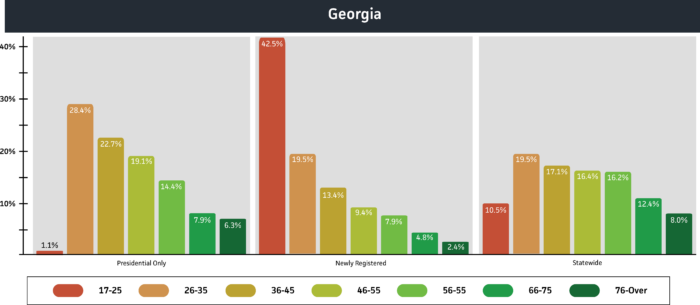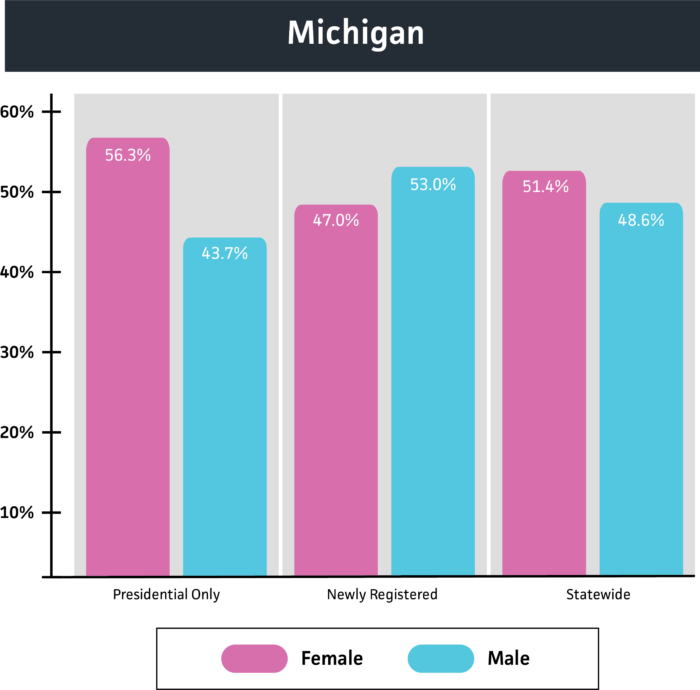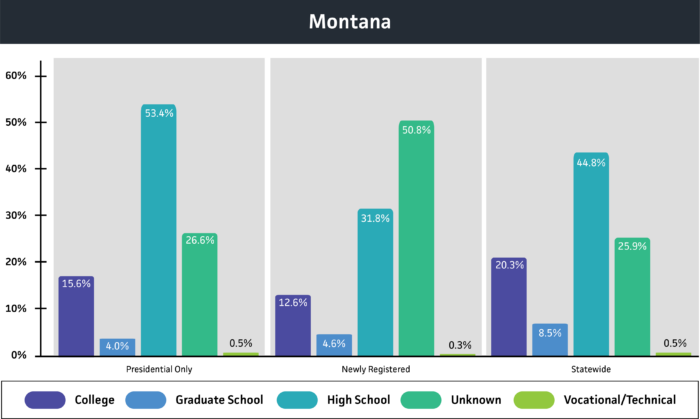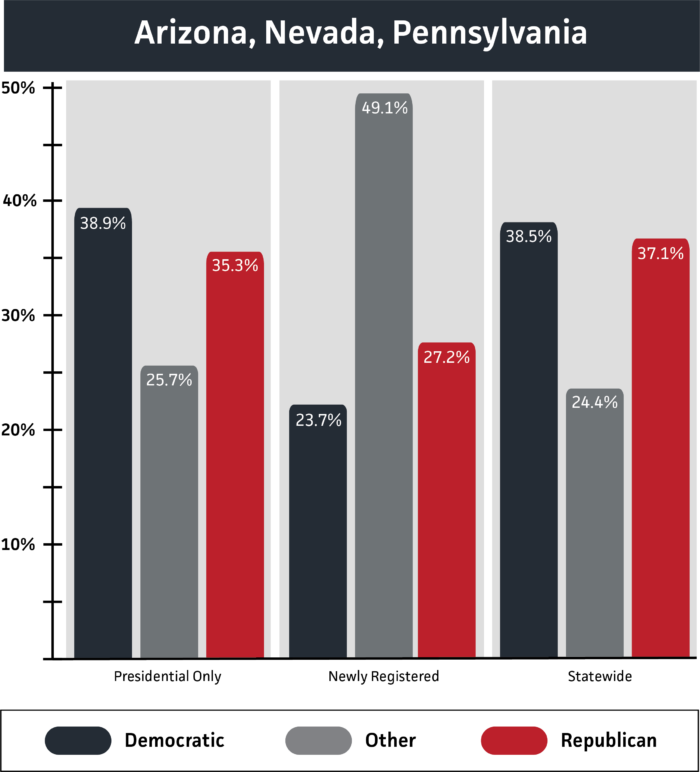As we approach the 2024 presidential election, understanding the characteristics of newly registered voters and presidential election-only voters is crucial. Data Trust’s National Voter File offers a unique opportunity to analyze these voters, providing valuable insights for both battleground states and local elections. With the unrivaled speed at which we refresh our individual state voter files, including weekly phone number acquisition, your organization can identify these voters and understand their leanings faster than anywhere else.
For this analysis, we define newly registered voters as individuals who registered to vote since January 1st, 2023, and presidential election-only voters as those who only participated in the presidential elections of 2020 and 2016.
Georgia: Voter Trends by Age Range

Individuals turning 18 years of age make up nearly the largest share of new registrants, therefore with no prior voting experience in any other locality, this trend is evident in Georgia:
- A significant proportion of newly registered voters have recently turned 18 years old (26.8%).
- More than three-quarters of new voters (75.4%) consist of younger working adults (age 17-45) who may have relocated for career opportunities, updating their voter registration in the process.
- Conversely, the presidential election-only group of voters reveals that younger voters (under 45 years old) are nearly 5% more likely to participate only in presidential elections compared to their overall population (52.2% vs. 47.1%).
Michigan: Voter Trends by Gender

In Michigan and throughout the country, women are no longer a minority constituency, as they make up the majority of the state’s voters at 51.4%.
- Since 2023, men have been registering to vote at a higher rate.
- However, women remain significantly more representative among presidential-only voters, accounting for 56.3% of this group.
- This highlights a significant gender dynamic, showing that while men are closing the gap in voter registration, women still dominate the group of voters who only participate in presidential elections.
Montana: Voter Trends by Educational Background

Much has been made about the sorting of voters based on their educational background, which will be a critical identifier for voters in the U.S. Senate battleground of Montana this year.
- Individuals with a high school education represent a significant majority of all groups of voters with a known educational background.
- The presidential election-only group of voters shows the highest representation of high school-educated voters, at 53.4%, substantially above the statewide representation of 44.8%.
- As we’ve identified that newly registered voters skew younger, this group of voters too has a significant high school-educated population at 31.8%.
Voter Trends in Battleground States with Party Registration

Looking at the battleground states of Arizona, Nevada, and Pennsylvania, many of the newly registered voters are registering as unaffiliated while the reliable presidential election-only voters remain more partisan.
- Unaffiliated and other party registration voters represent 49.1% of newly registered voters, suggesting a significant shift away from defining oneself as a member of the two major political parties.
- Democrats have a slightly stronger representation among presidential election-only voters (38.9%) compared to Republicans (35.3%).
Understanding the distinct characteristics of newly registered voters and presidential election-only voters is essential for preparing for November. Data Trust’s National Voter File offers targeting capabilities to help your organization navigate these trends effectively. Reach out to Data Trust today to discover how our Client Services team can support your organization’s needs in the upcoming election!